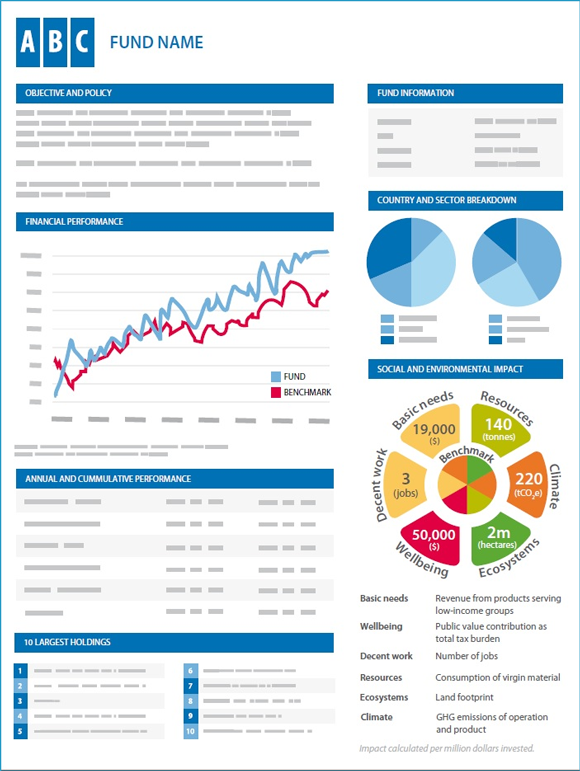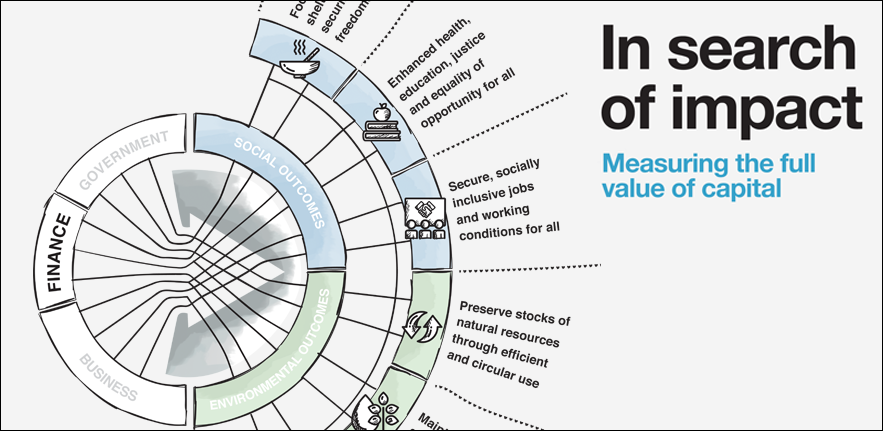500,000 tons of CO2, or the equivalent of 1.2 billion miles (50,000 around-the-world trips!) driven in an average passenger car – that’s the emissions we estimate are avoided every year as a direct result of the projects being funded by some USD 400 million-odd worth of green bonds issued by supranational institutions that we hold in our green bond portfolio at Zurich Insurance Group. Unfortunately we can’t estimate the impact yet on all of our green bond holdings worth roughly USD 1 billion, since not all issuers are reporting impact figures.
“So what?” you might ask. “Where is all of this leading to?”
Impact investing certainly remains one of the big buzz words in the sustainability sphere. Ask ten impact investors what it’s all about, and be certain to receive twelve (at least slightly) different answers. For what it’s worth, my view is quite simple: if it’s intentional, if it’s measurable, and it’s profitable – then it’s an impact investment. But by and large, the different views seem to fall into one of two camps:
The ‘traditionalists’ have been around for a while, making impact investments long before the term emerged. The notion of ‘additionality’ tends to be of great importance to them: to be impactful, investments should pass the ‘but for’ test: it would not have happened, but for our investment. Almost by definition, that puts the focus on more innovative financial instruments, transactions that tend to be smaller in scale, and underlying social and environmental issues that can be narrowly defined. The investors in this space tend to be foundations; high-net-worth individuals or their family offices; banks and insurance companies with dedicated allocations to impact investments managed outside the normal course of business (e.g. activities driven by the Community Reinvestment Act by banks in the US, or allocations made purely from a corporate responsibility perspective and managed by a corporate responsibility team). These investors are highly knowledgeable about the specific social or environmental issues they seek to tackle through their investments, and if they don’t build dedicated impact investing teams, they will invest through highly specialised ‘boutique’ managers. Because they are so knowledgeable about the underlying issues and close to the projects, and despite making quite some effort to measure impact, impact metrics do not matter all that much to them.
The ‘pragmatists’ are the new kids on the block. They have a desire to operate through existing processes within established parts of their businesses. As a result, they are hyper-sensitive to the notion of fiduciary responsibility and apply traditional ways to look at risk and return. To them, scale is more important than the concept of additionality. Things like green bonds or even listed equity investments are fair game. These investors are more mainstream insurance companies and asset managers who may not seek the impact out of a deep-felt mission, but because they see demand from their clients and stakeholders. They certainly also want to do the right thing, otherwise they wouldn’t go the extra mile to think about impact, but they also need to be able to convey the story behind the impact to broad groups of constituents. Consequently, they are quite keen to see impact metrics, but want them to be simple and consistent, so that they can be aggregated across a portfolio. Looking at revenue streams from certain categories of products, for instance, a data service MSCI recently started to offer under an ‘impact metrics’ heading, might just be acceptable. (That said, the pragmatists are not usually experts in a specific field of social or environmental impact, and so there is always a risk that they see things slightly too simplistically.)
Of course these are stereotypes with plenty of shades of grey around them. However, I do feel a real-life tension created between these two poles. The two approaches are not mutually exclusive and I certainly think there is a need and room for both. But let me nonetheless make the case for why it’s worth it to pursue the pragmatic approach and bring impact investing into the mainstream. This is where I see it all leading to:
1. Making the corporate sector’s contribution to society transparent
Companies go to great lengths to craft intricate messages and stories that showcase their contribution to a better society, sometimes in very abstract terms, often in a very selective way. Wouldn’t it be nice to have a set of standard performance indicators that created a more consistent approach to look at that contribution? Ideally, something that is linked to generally accepted categories of social issues, such as the Sustainable Development Goals (SDG). In a recent piece of work (In search of impact: Measuring the full value of capital), the Investment Leaders Group (ILG), of which Zurich is a member, has published a framework that condenses the SDG into six broad categories, and has proposed, and tested, specific metrics for two of those areas: climate stability and decent work. We found, for instance, that the companies represented in the Euro Stoxx 600 equity index helped avoid 13 tons of CO2 emissions per million dollars invested (admittedly, that’s after creating and inducing 225 tons of emissions in the first place…), or that the companies represented in the CAC 40 equity index created 4.6 jobs per million dollars invested. Not yet the perfect metric, but a starting point.
2. Setting policy objectives with an eye to the private sector
Given the scale of social and environmental challenges that need to be tackled and given the scale of public debt, policymakers increasingly look to the private sector for solutions (read: funding). ‘Public-Private Partnership’ (PPP) is about as much of a buzz term as is impact investing. Policymakers jump at things like green bonds or social impact bonds in the hope to attract investor money. In that light, a taxonomy and set of metrics to formulate common goals and evaluate progress seems like a sensible ask. Again, the SDGs seem like a good starting point, but work needs to be done to break them down into something that can be applied to PPPs and investments. (Related to that, traditional ways of measuring progress at a national level through GDP are increasingly being questioned. The Economist dedicated the cover story (£) of its 30 April issue to the topic, writing about how GDP needs to be complemented with other metrics.)
3. Optimise for impact
Transparency is just a starting point. Of course knowing that there is some impact does not make an impact investment. But once there is a metric, investment strategies can be designed, portfolios can be constructed, with an objective to optimise, or even maximise, impact. Even though every company has some positive impact, it’s hard to argue that your average equity or bond portfolio is an impact investment. With metrics in place, it wouldn’t take too much to create a portfolio with the intention to have a positive impact, even if within the constraint of a certain risk-return profile, tracking error budget, market beta, or other traditional financial aspect.
4. A cocktail party conversation about how many jobs your invest portfolio has created?
Data-driven and technology-enabled transparency is re-setting consumer expectations. Whether it’s what’s in your food, where the garment of your jeans was sourced, or what’s currently on your mind: people want to know the full story. (And not just millennials, that is, but everyone embracing the new possibilities of technology…) Why not know the story behind your personal portfolio or 401k? Communicating the impact of investments to the beneficiaries – and not just a letter grade or cryptic label – could be a real differentiator (see below for an idea of what this might look like, taken from the ILG report referenced above), and while certainly not everyone will care, I’m sure there are plenty of people who would happily discuss their portfolio’s latest impact metric at a cocktail party.







